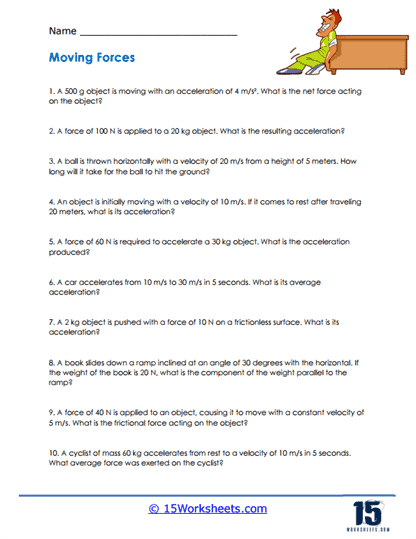Moving Forces

Worksheet Description
The worksheet works on the intricate relationship between forces, mass, and acceleration. It poses questions that explore scenarios where objects are subjected to varying forces and asks students to determine outcomes like net force, resulting accelerations, or time taken for specific events. Whether it’s an object sliding down an inclined plane or a cyclist experiencing force, the worksheet touches upon diverse real-world situations, making students apply theoretical concepts to tangible examples.
To proficiently tackle this worksheet, students should first ensure they’re well-versed with Newton’s second law of motion, which relates force, mass, and acceleration. Additionally, understanding kinematics will be crucial, especially for questions that involve calculating time or distances based on initial velocities and accelerations. When considering objects on inclined planes, grasping the concept of decomposing forces into components-parallel and perpendicular to the surface-will be pivotal. For questions involving friction, students should remember that objects moving at constant velocity experience a net force of zero, implying that applied force equals frictional force.
The worksheet’s primary aim is to fortify students’ understanding of how forces, both external and internal like friction, influence the movement and behavior of objects. It prompts learners to not just memorize formulae but to comprehend the underlying principles that govern motion. By navigating through a spectrum of scenarios, from objects on inclines to accelerating cyclists, students are trained to recognize and apply the appropriate equations and concepts. The overarching goal is to equip them with a holistic and practical grasp of forces and motion, enabling them to predict and analyze real-world physical phenomena.
